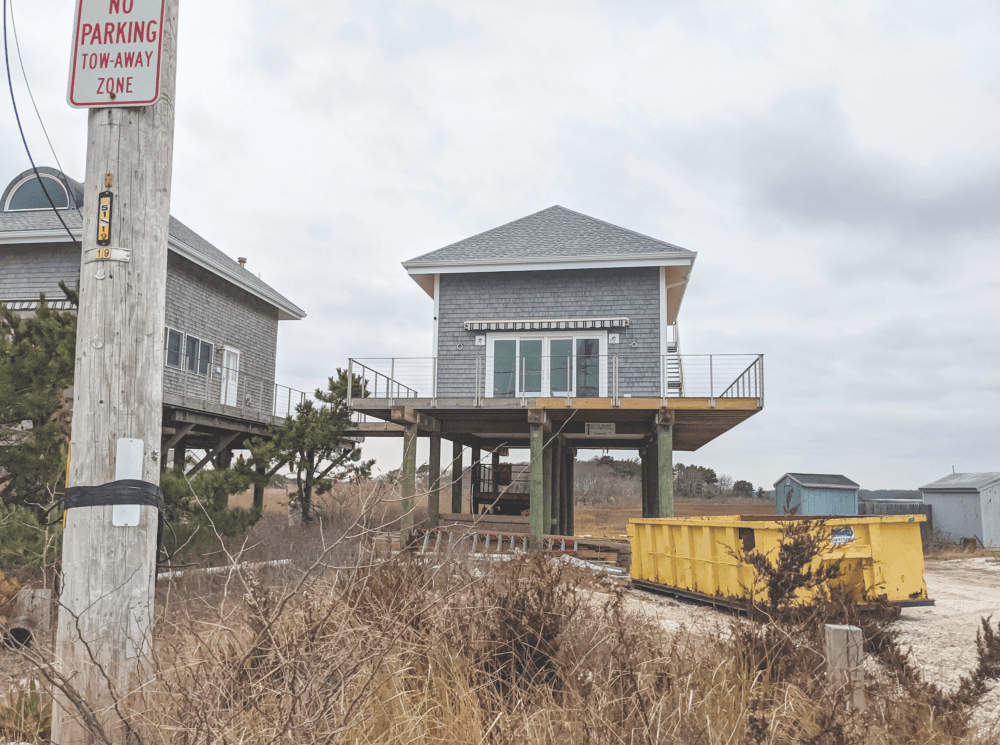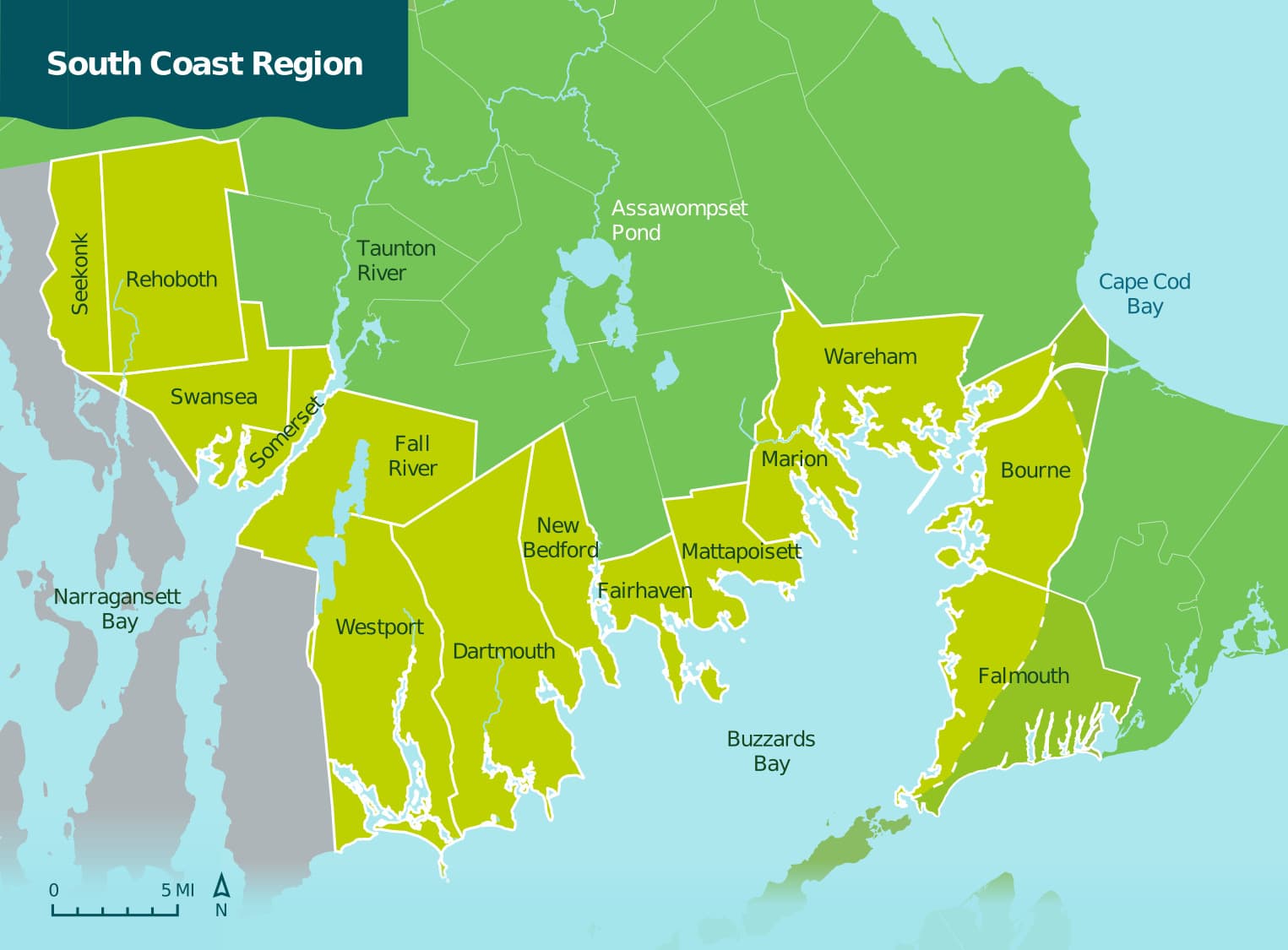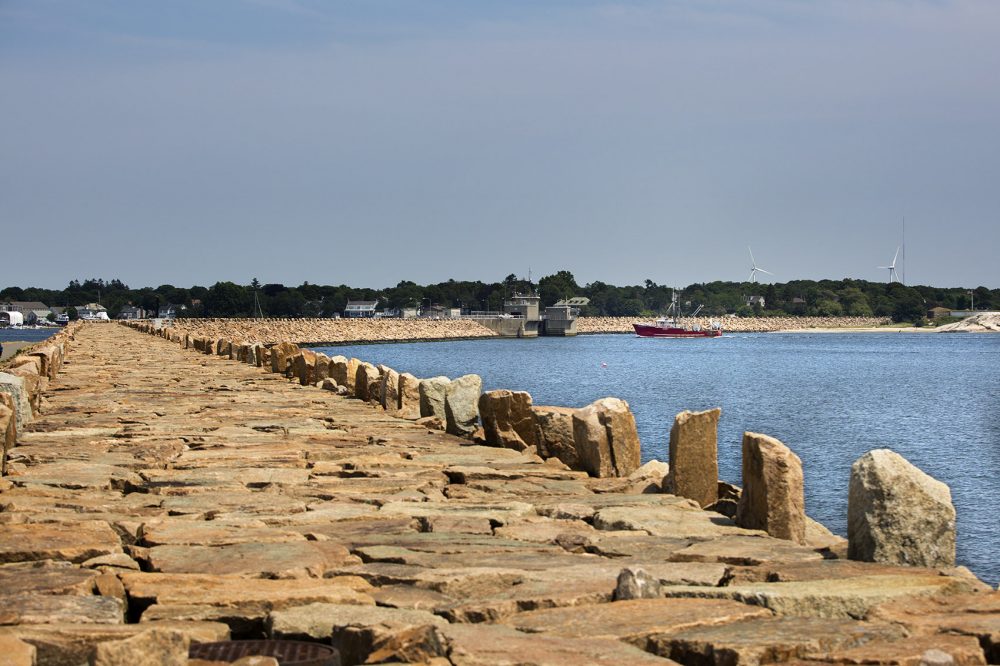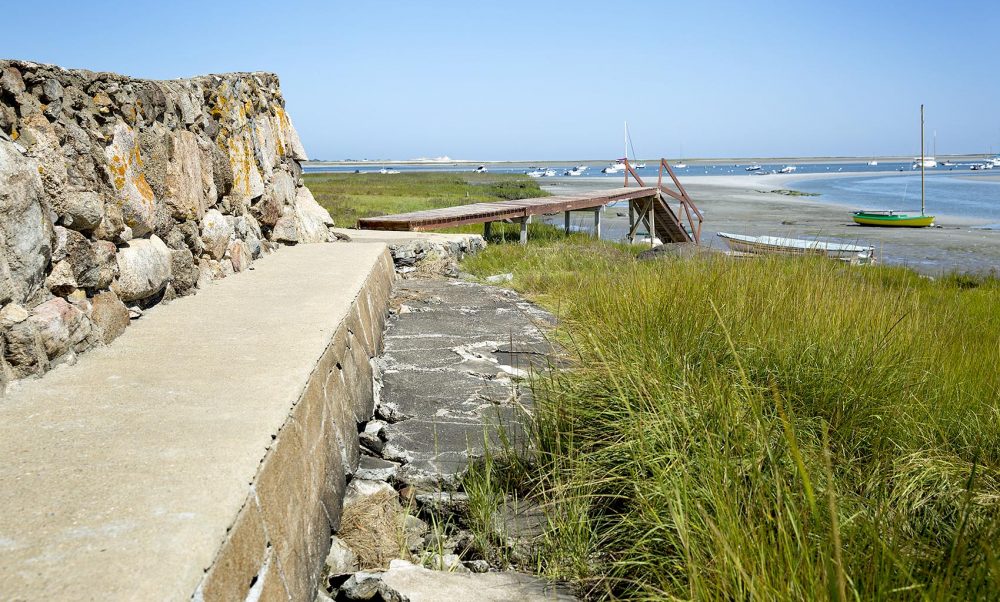Advertisement
Rising seas threaten Mass. South Coast and prosperous fishing port, report finds. Here are 5 takeaways

A new report from an environmental nonprofit finds that Massachusetts' southern coast will see increased flooding and erosion, as well as more destructive bombardment from storms. The report, from the Trustees of Reservations, says that sea levels along the South Coast are projected to rise over two feet by 2050.
The Trustees is the largest private owner of coastal land in in Massachusetts, overseeing 120 miles of coastline. In 2020, after seeing increased flooding and erosion on their properties, the group began to produce annual reports on the current and expected effects of climate change on the Massachusetts coast.

Their first report looked at the North Shore; the 2021 report covered Martha's Vineyard, Nantucket and Gosnold; this year's focuses on the 14 South Coast towns that border Narragansett Bay and Buzzards Bay.
Like previous reports, the latest predicts big climate change impacts on these towns over the next few decades. Here are five takeaways:
New Bedford has a hurricane barrier that works really well. But that ain't gonna last.
After being battered by hurricanes in 1938, 1944 and 1954, engineers built a harbor barrier to protect the Port of New Bedford, the most prosperous seafood port in the country. The barrier keeps water in the harbor at a level that protects infrastructure from flooding; when a storm threatens high water, the Army Corps of Engineers closes the gates. In 2019, they closed the barrier 26 times. With projected 2050 sea level rise, they'll have to close the barrier at every high tide — that means 1-2 times a day.

"That's clearly not doable for a working port, it's not sustainable," said Cynthia Dittbrenner, director of Coast and Natural Resources at the Trustees of Reservations.
The New Bedford Port Authority and the Town of Fairhaven are looking at ways to make critical infrastructure in the harbor more resilient to flooding, either by raising, moving or replacing it.
Low-lying towns can expect daily high-tide flooding by 2050.
Over the next 30 years, sea levels along the South Coast are projected to rise over two feet. That means that over 25 miles of road and more than 1,400 buildings in the region will flood every day at high tide by 2050. Towns with low-lying critical infrastructure, like Fairhaven, Falmouth and Wareham, are especially vulnerable.
Environmental justice communities are especially vulnerable.
In several towns, low-lying neighborhoods vulnerable to flooding have a large number of low-income or minority residents, who may not have the money to constantly pump out their basements and replace their ruined furniture.
"Municipalities or regional planning associations really need to think about, how do we prioritize helping those communities that don't have the resources to do it on their own," said Dittbrenner.
The cities New Bedford and Fall River also have large environmental-justice populations — groups that face increased environmental risks because of language barriers, race or income — and while those residents aren't likely to get directly hit by flooding, their livelihoods could be. The Port of New Bedford, for instance, supports about 39,000 jobs and generates about $1.8 billion in total personal wages annually. If the port can't operate, those jobs go away.
Salt marshes buffer towns against flooding. But they're drowning.
The South Coast boasts 4,900 acres of salt marsh, which filter water, offer wildlife habitat and act as storm buffer to the communities behind them. But South Coast marshes tend to be smaller than others in the state, and are projected to disappear more quickly as they are inundated by rising seas. In addition, years of draining and ditching the marshes for agriculture and mosquito control have compressed the soil, so some marshes are also sinking.

"So at a time when we really want the marsh to be doing its natural thing of building sediment and building organic matter and getting higher to keep up with sea level rise, it's actually sinking," said Dittbrenner.
The report predicts that 23% of the salt marsh on the South Coast will vanish by 2050.
Other states are trying experimental methods like "mud motors" to strengthen marshes by adding sediment, but those aren't allowed in Massachusetts yet.
People are starting to talk about 'retreat'
Some South Coast communities are starting to tiptoe towards the concept of "retreat" — abandoning flood-prone residential areas for good. "Retreat is a real conversation the town is going to have to have, and it's not an easy decision when you're talking about people's homes," said Jennifer Lincoln, Falmouth Conservation Commission Administrator, in the report.
The Trustees and other environmental groups are supporting state legislation to create a Flood Risk Protection Program, which would buy properties at risk for flooding, tear them down, and instead of rebuilding, restore the land to marsh or beach that protects inland neighborhoods.
A critical component of any such law, said Dittbrenner, is ensuring that the buybacks are voluntary, and that most investments go to homeowners and renters who lack resources, especially those in environmental justice communities.
